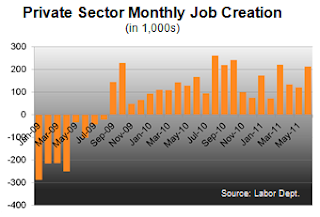"It is definitely and without a doubt a candidate-driven market, however many employers are still laboring under the same processes as they did when it was an employer-driven market," said a recruiter responding to the study. "Candidates now have choices and employers need to make the interview process go smoothly and quickly." According to the report, in the second half of 2014, 83 percent of recruiters described the talent market as candidate-driven, up 29 percentage points from the second half of 2011.
The executive and managerial market continues to be candidate-driven because of the availability of more job opportunities and growing talent shortages due to skill gaps. Top performers have a strong advantage, with multiple job offers to consider and the ability to reject less desirable work opportunities. This is significant when you consider the factors motivating a job move. According to the study, 49 percent of recruiters say greater opportunities for advancement is the primary motivating factor for candidates looking to make a move, followed by improved compensation. Based on year-over-year data, the main reasons for rejected job offers continue to be a result of great candidates accepting offers with other companies and being presented with disappointing compensation. Further, the time between the first interview and the rejected offer is shrinking, with a six percentage point increase from the second half of 2013, for candidates that rejected offers within two weeks of the first interview.

Click to enlarge.
MRINetwork recruiters provide the following survey insight about rejected job offers:
- The search process is still taking way too long considering the recession
has been behind us for years and the fact that it is a candidate-driven market
in many industries. This provides candidates with the time to investigate other
opportunities.
- Candidates are much more fully engaged and also much more aware of their
worth in the marketplace.
- Clients are still looking for the perfect candidate, yet are not offering an enticing salary.
With more top performers moving on, the candidate-driven market points to several things:
- Internal and external branding will continue to be important as companies
face growing pressure to sell their value proposition to employees and
candidates. "They are operating with the mindset that there are an abundance of
candidates, all willing to jump through hoops to get a job at their company, and
that is just not true anymore," says an MRINetwork
recruiter.
- A streamlined hiring process will be imperative to avoid losing top
candidates in 2015 and beyond. One recruiter notes, "Every candidate we speak
with is actively looking and has several irons in the fire."
- Talented employees who were hired at bargain salaries during the recession will be moving on. The majority of MRINetwork recruiters (83 percent) say they have interacted recently with these under-compensated and under-employed candidates who are anxious to improve their earning capacity. Salary and benefit packages will need to be adjusted to retain these individuals.
Although the study results demonstrate that hiring trends are highly favorable towards top performers in the executive, managerial and professional space, recruitment and retention will continue to present ongoing challenges for overall hiring as the job market expands. A fundamental shift is taking place in the way in which candidates expect to be recruited, and companies need to get on board with these changes to bring in and hold on to the talent they seek.
To view the complete study, visit www.MRINetwork.com/recruitersentiment.




